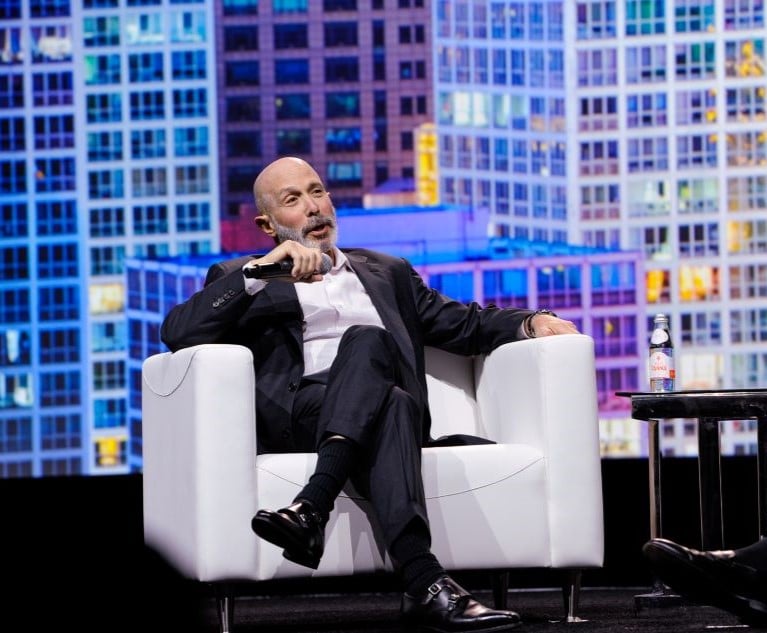
The third Insurance Careers Month in February began with avirtual town hall conference co-hosted by the Insurance CareersMovement (ICM) and A.M. Best.
|Industry luminaries such as Brian Duperreault, CEO of AIG, Inga Beale, CEOof Lloyd's, Matt Mosher, EVP of A.M. Best, Pina Albo, CEO ofHamilton Insurance Group, and many others, shared their views onhow the industry must evolve to attract a new generation oftalent.
|Related: Insurance careers: What do insurance professionalsreally do
|The need for new expertise, simply from a human capitalperspective, is daunting for insurance. The industry is keenlyaware of the looming exodus of seasoned insurance professionals whohave reached retirement age, creating a flood of positions thatmust be filled.
|But the need to attract younger talent is about much more thanhiring for headcount; it's about acquiring new thinking andtechnical skills that will usher in a new technologically-savvy,innovative, and efficient era across insurance.
|Industry-wide opportunity has, until this point, largely fallenon deaf ears regarding the younger workforce. During the town hall,there were many opinions on how to frame the insurance industrymore effectively to attract the highly sought after new generationof professionals to solve the talent gap issue.
|Related: February is insurance careersmonth
|Diversity and inclusion
Many of the presenters during the virtual townhall discussed the need to promote more diversity in their workforce, and create a moreinclusive work culture that invites ideas from every individual,not just C-level or mid-level employees.
|The diversity aspect is important from both a work culture andcustomer standpoint. It fosters more creativity and also helpscompanies better identify with their customers, who are alsoincreasingly more diverse.
|On the topic of workforce diversity, Dan Glaser, CEO of Marsh& McLennan, identified this dynamic as building a companyculture based on circles instead of hierarchy. As more than a fewpanelists pointed out, diversity isn't just about ethnicity,religion or race. It is also about different opinions that areshared across generations, experiences and upbringing.
|For some of the speakers, the lack of diversity in insurance isthe main catalyst to the younger generation's misperception thatinsurance is a boring, stagnant industry. The same millennials theindustry is trying to attract relish the creative problem solvingand free-thinking collaboration associated with a diverseworkforce.
|Inclusion and diversity aren't one-sided endeavors. By allowingnew employees and veteran insurance executives to speak morefreely, each group is able to exchange knowledge of different skillsets. It is true, for instance, that veteran insuranceprofessionals must learn how to adopt data-driven decision making,but newcomers must also learn the complexity of the insurancespace.
|Brian Duperreault, CEO of AIG, spoke passionately about howinsurance touches every industry. He highlighted how working in insurance requires smarts thatinclude being good with numbers, social prowess, technical skills,and inquisitiveness, and is one of the few industries that providesand encourages exploration to all different kinds of lines and jobroles in the career.
|Related: 4 diversity challenges stifling insuranceinnovation
|New industry, new skill sets
The insurance industry is in the middle of atransition that will see new companies enter the space,such as Lemonade, and existing companies revamp the way they handleeverything from the customer experience to risk.
|This shift requires a new arsenal of skill sets that includesdata analysis, predictive modeling, data science, softwaredevelopment, coding, research, AI and more. It is important thatthe younger generation of “digital natives” is involved in usheringinsurance into these new areas and developing the next iterationsof insurance products.
|Related: InsurTech to 2020 and beyond
|Occurring in tandem with new products is an additional set ofrisk indicators that could provide more actionable insights thanthose currently in use.
|New technologies such as drones, sensors, socialmedia, and others will need to be integrated with predictivemodels used today. These data sources, based largely on informationthat a younger generation is comfortable with, will create adistinct advantage for the insurers who incorporate employeesnative to the technologies.
|In other words, the story of insurance is not one of moderation andstagnancy, but rather of an industry in a transformativestate where newcomers can help mold the future rightat this moment.
|Greg Jacobson of the Jacobson Group took it a step further,expressing his viewpoint that Artificial Intelligence entering theindustry may remove certain jobs, but will create many more newopportunities in the process. This isn't just true of insurance,but of business in general. According to Gartner, 1.8 million jobs will be taken by AI,but the emerging field will create 2.3 million by 2020.
|Related: Does working in insurance pay?
|Communicating the inherent philanthropy of insurance
Another commonly referenced subject of the town hall was aconcerning misconception of what insurance does for people andbusinesses.
|The general public hears far more stories of insurers balking atclaims, for instance, than how businesses could not operate withoutthe proper coverage. Insurance allows people and businesses of allkinds to pursue their dreams, and live their daily lives, withoutfear of an accident breaking the bank. Inga Beale perhaps said itbest; insurance “enables human progress.” This is true ofemployment opportunities and philanthropic endeavors alike.
|According to a study conducted by Morning Consultand Fortune Magazine, nearly two-thirds of people betweenthe ages of 18 and 34 were at least somewhat more likely to want towork for a company that gave to charity than one did that not. Frominitiatives like Insurance Industry Charitable Foundation (IICF),to the time and money that insurers donate, the industry mustbetter communicate its charitable endeavors to attractmillennials.
|The Insurance Careers Movement began as a grassrootscampaign that has flourished into an organized global initiative850 companies strong. Its supporters come from a variety ofdifferent sectors of insurance, unifying under a series of messagesthat improve industry storytelling and drive interest. As afounding member, Valen could not be prouder of what theorganization has become.
|The opinions expressed here are the author's own.
|Kirstin Marr is the Chief Marketing Officer for ValenAnalytics. She's also leading the Insurance CareersMovement coalition. To reach this contributor, send emailto [email protected].
|See also:
|Millennials: Reaching a new generation of employees andcustomers
|Want to continue reading?
Become a Free PropertyCasualty360 Digital Reader
Your access to unlimited PropertyCasualty360 content isn’t changing.
Once you are an ALM digital member, you’ll receive:
- All PropertyCasualty360.com news coverage, best practices, and in-depth analysis.
- Educational webcasts, resources from industry leaders, and informative newsletters.
- Other award-winning websites including BenefitsPRO.com and ThinkAdvisor.com.
Already have an account? Sign In
© 2024 ALM Global, LLC, All Rights Reserved. Request academic re-use from www.copyright.com. All other uses, submit a request to [email protected]. For more information visit Asset & Logo Licensing.








